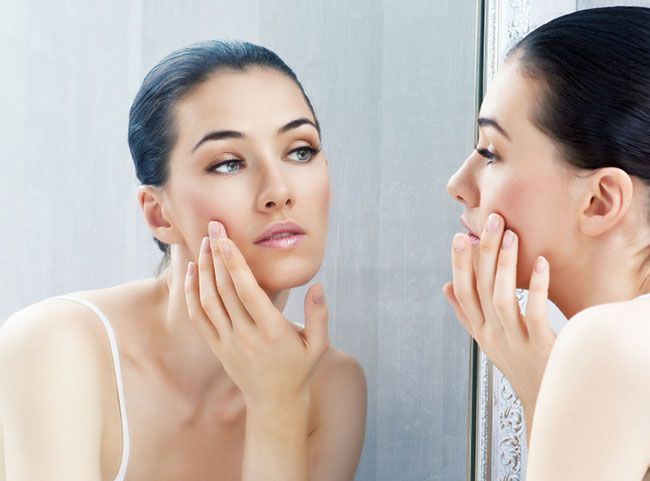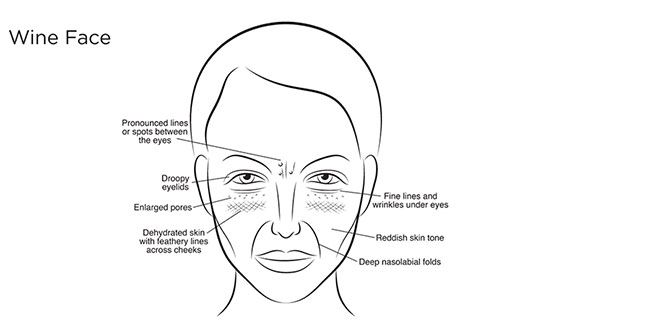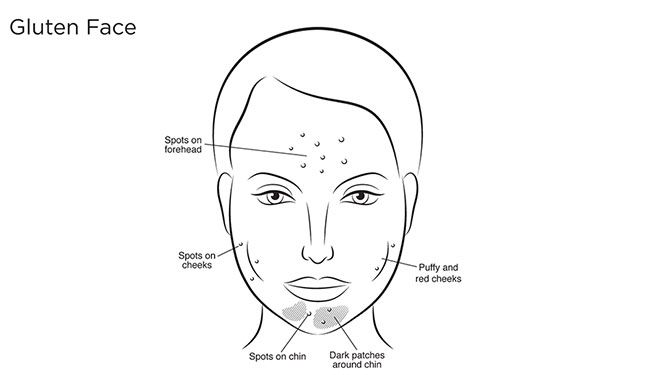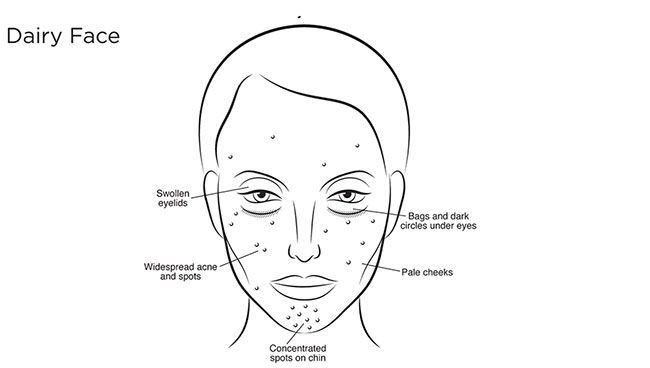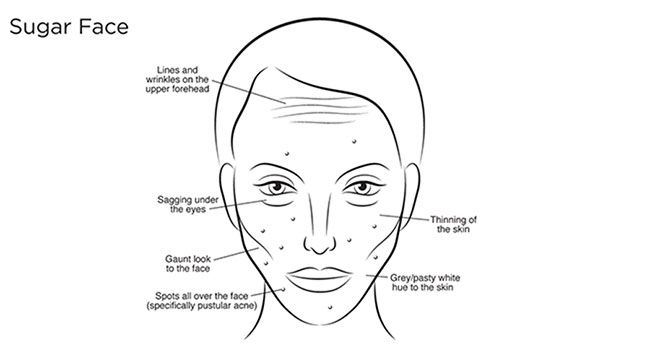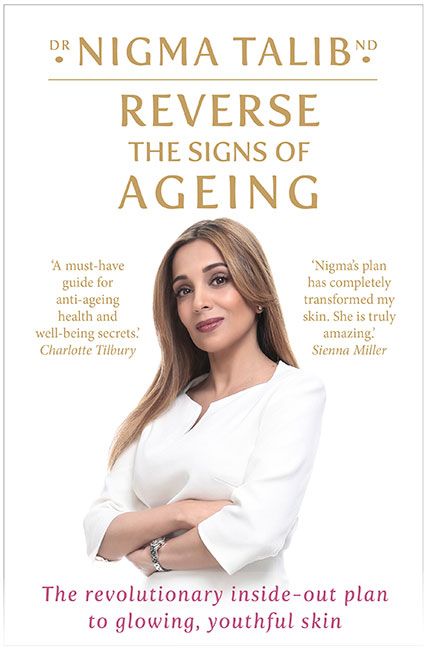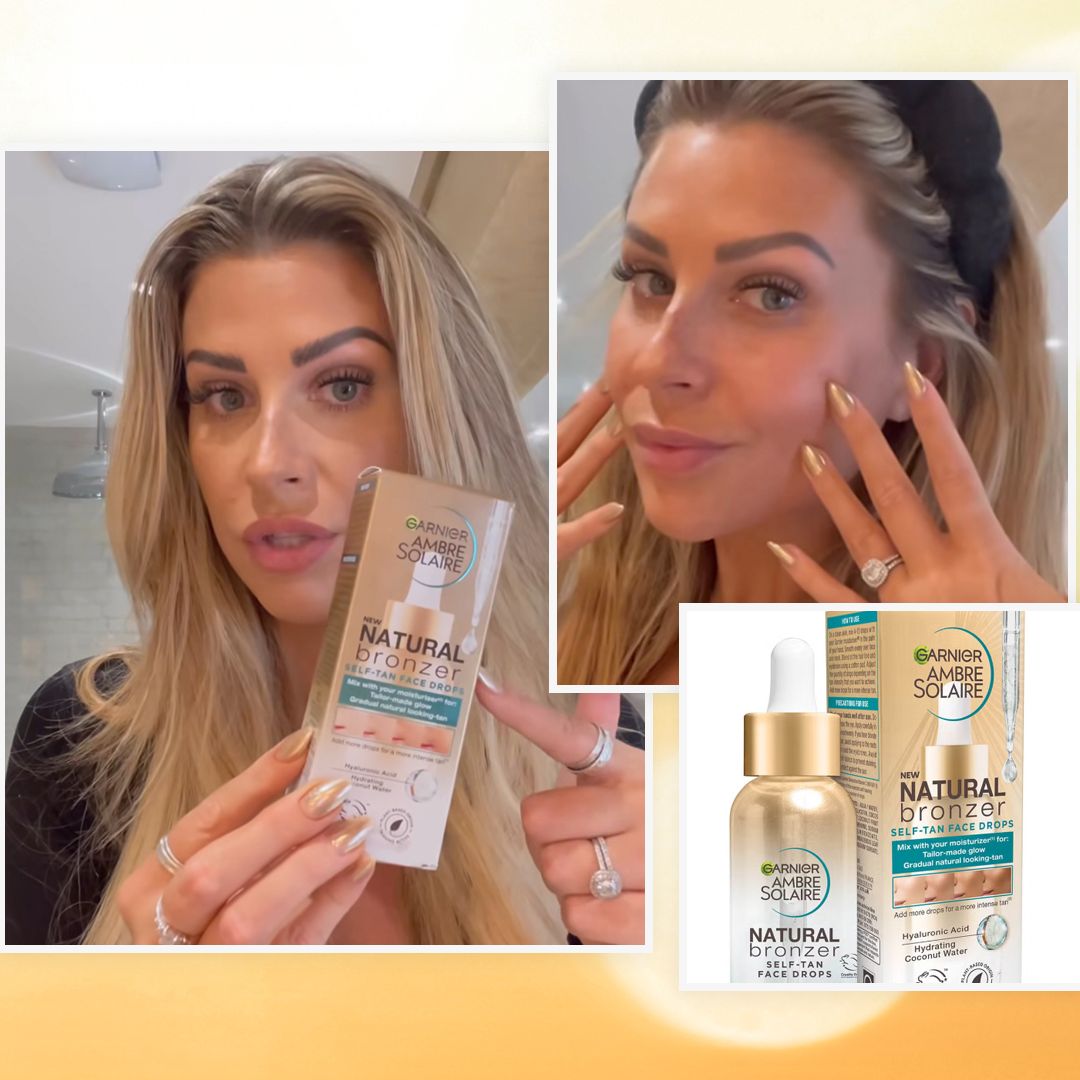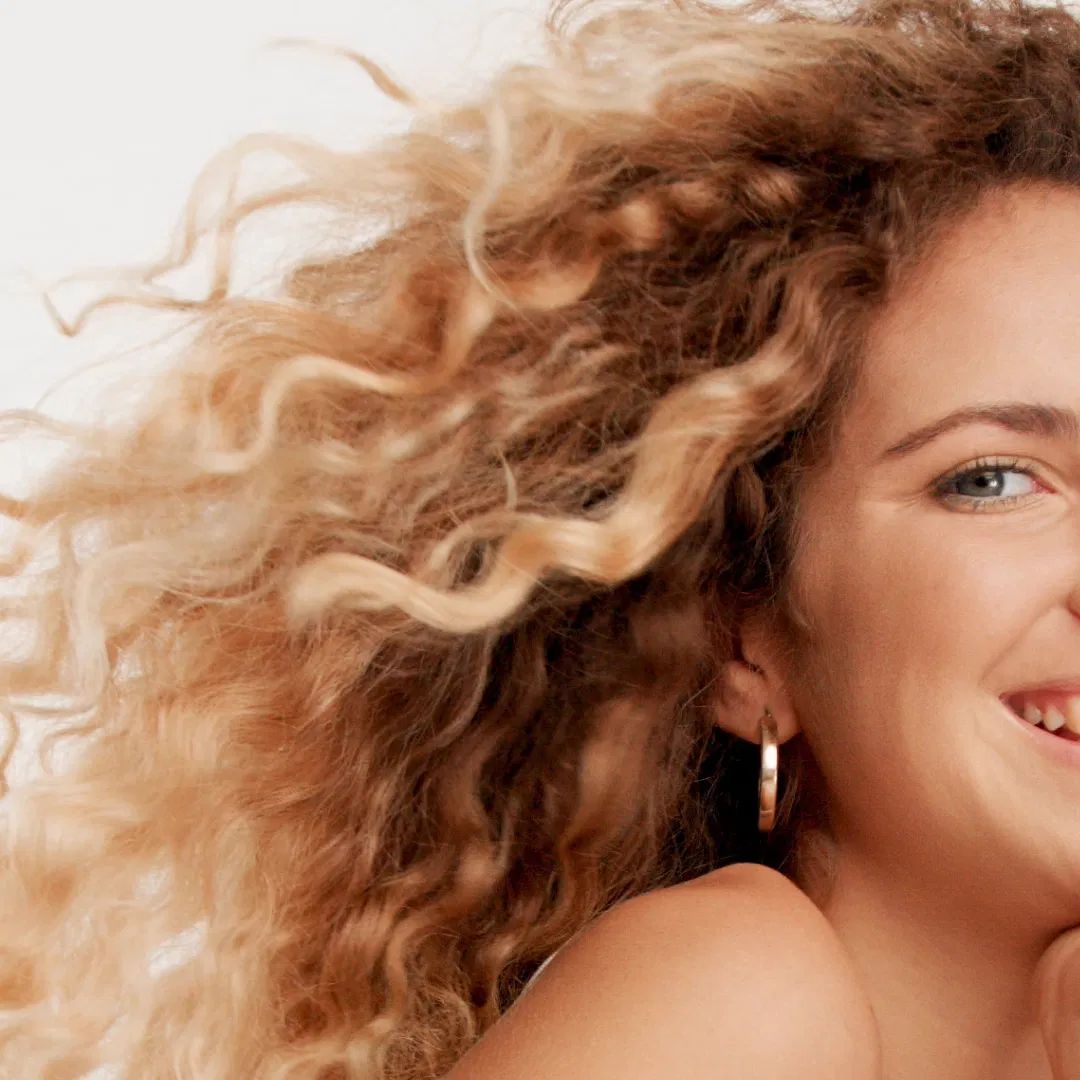You may have heard the expression ‘a moment on the lips, a lifetime on the hips,’ but it seems unhealthy food can do a lot more than cause you to put on a few pounds - a poor diet can lead to the appearance of your face suffering.
With Christmas fast approaching, you might have been planning on overindulging. But before you reach for that extra glass of mulled wine or mince pie, you might want to consider just how these treats could affect your face.
Your diet has a significant impact on your complexion
Dr Nigma Talib, ND has worked out exactly why we suffer from common skin problems like breakouts, puffy eyes and redness, and it all comes down to our diets. The renowned naturopathic expert has identified four common food groups that leave our skin looking less than fresh - 'dairy face', 'wine face', 'sugar face' and 'gluten face'.
In her new book, Reverse the Signs of Ageing, Dr Nigma explains the theory of ‘eating for beauty’, and she encourages everyone to find out which face most accurately represents theirs, before cutting down on the food that’s causing the breakouts.
Dr Nigma Talib, ND, has identified four food groups that are wreaking havoc on our skin
Speaking to HELLO! Online she revealed that she developed the charts after seeing the same patterns in thousands of patients, and is really excited to finally share the secret to having healthy, flawless skin.
Could you be suffering from wine face? Or perhaps dairy is your vice? See the charts below to identify which substance you should be cutting out of your diet.
Too much alcohol can lead to red, dehydrated skin
Wine face:
Ageing characteristics can be triggered by any kind of alcohol, which dehydrates the skin, worsening the look of fine lines and wrinkles. The high sugar content also damages the protein collagen - vital for keeping skin elastic - causing enlarged pores and droopy eyelids.
The space between the eyes is associated with the liver, so wine face sufferers tend to have deep lines or redness between the brows. Alcohol also slows down the enzyme that the body uses to fight inflammation, resulting in flushed cheeks and a red nose.
Treatment: Dr Nigma recommend taking a three week alcohol break then sticking to the 80/20 rule. Abstain for 80 per cent of the time, and you can enjoy small quantities for the other 20 per cent. If you want to drink, opt for gluten free spirits such as rum, tequila or potato-based vodka. And if you want a glass of wine, try red instead of white or choose ones with a lower sugar content, such as sauvignon blanc, pinot grigio, merlot or pinot noir.
Too much gluten can lead to swollen, blemished skin
Gluten face:
The protein found in wheat, barley and rye has been shown to increase the inflammatory response, leaving the face looking bloated, inflamed or swollen. Gluten can also affect the pigmentation of the skin, leading to age spots and darker patches on the chin.
If you develop an itchy blistery rash after consuming gluten this could also be a symptom of coeliac disease – a digestive condition where a person has an adverse reaction to gluten. If you suffer from these symptoms you should tell your doctor.
Treatment: No matter how many supplements you take or how many peels you have, nothing will make your skin look better than just removing gluten from your diet. Combine this with drinking more water and consuming more fibre.
Too much dairy can lead to pale cheeks and undereye bags
Dairy face:
As we age we lose the enzymes that allow us to digest lactose effectively, which can cause the immune system to trigger the release of inflammatory chemicals. This can cause redness and swelling, as well as puffy eyelids, under-eye bags and dark circles on the face.
Milk also contains chemicals that can disrupt the balance of your hormones, which cause an over-growth of skin cells, blocking pores and trapping bacteria. This results in breakouts that tend to happen on the chin.
Treatment: Cut out all dairy products for three weeks and try taking primrose oil in the evenings, as it is a powerful anti-inflammatory. Eating foods rich in Vitamin A, such as eggs, liver and carrots, as well as Vitamin E, found in nuts and leafy vegetables, can also help to repair the gut.
Too much sugar can thin the skin and leave it discoloured
Sugar Face:
Too much sugar can cause the springy, elastic collagen fibres in our skin to become rigid and inflexible. As well as saggy skin, sugar increases the levels of insulin, making the face appear washed-out and sallow.
Sugar also affects the balance of bacteria in the gut, which can lead to breakouts on the face, shoulders and chest. But most peculiarly, it can also affect the eyebrows. Insulin imbalance can leave eyebrow hair looking wispy and fine.
Treatment: Sugar is in virtually every meal we consume, so cutting out additional sugar entirely, such as in cakes, fruit juices and processed food, will have an amazing effect on the skin. Even just cutting your sugar intake in half will help improve your complexion.
Reverse the Signs of Ageing by Dr Nigma Talib ND is published by Vermilion (£12.99)
For the best results, Dr Nigma recommends cutting out whatever food substance is irritating the skin for 28 days, before carrying on with the 80/20 rule for two months afterwards. Most patients begin to see visible differences within two weeks, but she warns not to get disheartened if the results are not immediate, as some people have more stubborn skin than others.
And whilst there’s no such thing as a ‘quick fix’ in the world of beauty, there are a couple of ways you can improve your skin within a couple of days. Cutting out dairy, gluten, sugar and alcohol entirely before an event can help reduce bloating. Whilst dabbing on frozen cucumber, aloe vera and turmeric in a flannel can help reduce irritation in the face.
Reverse the Signs of Ageing by Dr Nigma Talib ND is out now.

